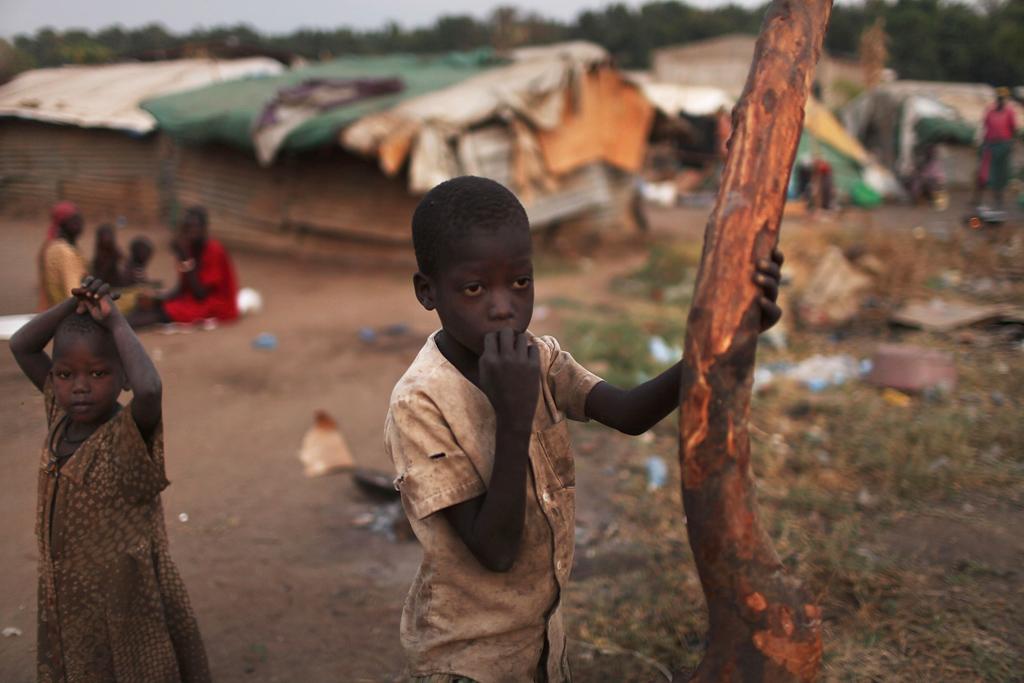This year, on its birthday, South Sudan would like to take stock of its estimated 9,000 child soldiers
Juba, South Sudan.
JUBA, South Sudan — Birthdays are a time to reflect, even for countries. South Sudan turns 3 years old today and this year it has decided to take stock of its estimated 9,000 child soldiers.
It's a staggering figure and one that has motivated the world's youngest nation — also one of its most troubled — to try to change its image amid brutal war.
Last month, South Sudan's national army, the Sudan People's Liberation Army (SPLA), recommitted to eliminating children from its ranks as part of the UN children's fund's star-studded “Children Not Soldiers” campaign. Afghanistan, Chad, the Democratic Republic of the Congo, Myanmar, Somalia, Sudan and Yemen are also working with the UN to stop the use of children by government security forces before 2016.
That's a tall order for South Sudan. Out of the estimated 9,000 child soldiers, the UN has verified only 298 (296 boys and two girls). Out of those, about half have been directly connected to the SPLA since war erupted in December. Opposition forces are believed to have significantly greater numbers of children in their ranks.
And former SPLA soldiers say the number of child soldiers is growing.
Former SPLA who are ethnically Nuer accuse the government of recruiting child soldiers from the same tribe as President Salva Kiir to build a stronghold before fighting broke out in December 2013.
The war has pitted two ethnic groups, Dinka and Nuer, against each other. Nuer soldiers were driven from the army when fighting started.
In 2013, President Kiir traveled to Northern Bahr el Ghazal and Warrap states, ordering governors there to assemble fresh infantry. Young people from these remote, majority Dinka states were specifically targeted because they are generally less educated and easier to mobilize along ethnic lines. Kiir is from Warrap state.
"After the trip two battalions were created, each made up of 750 Dinka soldiers between the ages of 14 and 20," a former Nuer SPLA soldier said on the sidelines of a press conference in Juba last month. The soldier declined to give his name.
They were trained in the capital and replaced the Nuer troops who were driven out in December 2013.
One battalion is at Luri Mountain, the other at the president’s house. Both bases are impenetrable without top SPLA approval.
Since the president’s trip, Paul Malong Awan, the former governor of Northern Bahr el Ghazal, has been promoted to army general chief of staff.
Roots of the problem
In one of the poorest nations on Earth with a 20 percent literacy rate, employment with the national army is one of the only steadily paying jobs available.
South Sudan has not yet achieved universal birth registration. This makes it difficult to determine if an individual is over 18. Many people from rural areas don’t know their exact age. One of the anonymous Nuer soldiers added, “They don’t have knowledge of international laws.”
Before South Sudan gained autonomy and the SPLA became a national army, the force had thousands of children in its ranks fighting against Sudan in a war that claimed more than a million lives. In the mid-1980s and early '90s, as many as 20,000 children lived in Panyandong camp in Ethiopia where they were given military training and attended schools in the camp.
Majur Mayor, deputy chair of the National DDR Commission, which focuses on disarming, demobilizing and reintegrating ex-combatants, claimed that children have never fought for the SPLA. “You train them and you give them guns but only for protection,” he said.
Mayor said during the war with the north, before the secession, children needed the arms and training for their own protection. Now, he says, there is enough protection for them. Children are no longer armed and trained.
Mayor allowed that today some may linger in the army barracks for security, food or to perhaps make a bit of money watching the soldiers' things or cooking. If they are sighted, it is expected that they will be reported to the DDR’s Child Soldiers Unit.
Other SPLA admitted that children have fought with the army in the past, and said there may still be children serving as combatants.
Brig. Gen. Chaplain Khamis Edward, head of the SPLA Child Protection Unit, said it is difficult to monitor the current situation in parts of the north where much of the fighting is taking place. Right now, it is almost impossible to reach most of these areas by car. The child protection unit relies on reports from the UN, after which they work to remove the under-aged fighters.
Then children who are removed from the ranks are often from conflict areas, where their homes are destroyed or abandoned. So, they return to war.
Representatives admit the current conflict cannot help but contaminate any progress that has been made in stopping the use of child soldiers.
When asked if there are currently children serving with the national army SPLA spokesman Col. Philip Aguer replied: “I cannot say ‘no,’ and I cannot say ‘yes.’”
